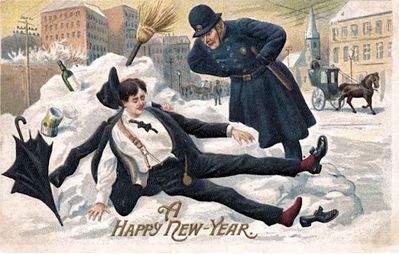
Tonight, I am giving my annual Ring in the New Year Walk for London Walks.
To book, click the link below
https://www.eventbrite.co.uk/e/ring-in-the-new-year-virtual-walk-tickets-756382860497

The Past brought to Life

Tonight, I am giving my annual Ring in the New Year Walk for London Walks.
To book, click the link below
https://www.eventbrite.co.uk/e/ring-in-the-new-year-virtual-walk-tickets-756382860497

On the seventh day of Christmas
My true love sent to me:
7 Swans a Swimming; 6 Geese a Laying;
5 Golden Rings;
4 Calling Birds; 3 French Hens; 2 Turtle Doves
and a Partridge in a Pear Tree
First an admission, there is a lot of confusion out there as to which is the First day of Christmas. According to my muse, Charles Kightly, the first day of Christmas is Boxing Day, the 26th of December. This makes Twelfth Night January 6th, which is Epiphany – when the three wise men rocked up with their fabulous presents. But that is a Christian day of importance, and most other authorities begin the counting on Christmas Day. So, Twelfth Night is Epiphany Eve, i.e. January 5th. Have a look at Notes&Queries for different viewpoints. One suggestion was that the Church had to accept that the Twelve Days of Christmas were taken up with pagan activities and allowed it to go on until the night before Epiphany. I have gone back and rearranged my days of Christmas accordingly and am I going to take my Christmas decorations down before going to bed on the 5th January. Twelfth Night.
New Year’s Eve
This is a day of preparation, and perhaps of anxiety. Have we got an invitation anywhere tonight? Is anyone going to come to our party? Can I take another blow out feast, a belly full of alcohol and a very late night? For years in my life, New Year’s Eve was spent with my parents watching some inexplicable variety show hosted in Scotland. Google has helped me remember that it was the ‘White Heather Club’ hosted by Andy Stewart. Up to 10 million people watched this between 1960 and 1968. I never understood the pleasure of it, and it seemed a symbol of an old-fashioned world that was passing and irrelevant.
More recently, if not spent at a party, New Year’s Eve is spent with Jools’ Annual Hootenanny, which is a music show masquerading as a live New Year’s Eve party. It features really excellent bands and singers. It is, however, recorded earlier in December (15th, 20th are dates I have seen) and hence a New Year’s fake. Here is a 2007 except starring Madness’s ‘House of Fun’. The fun of this is to spot the stars grooving along to the music.
New Year’s Day needs a lot of preparation. Folklore suggests that this should include finishing off any unfinished work or projects, as a task carried forward is ill-omened. Your accounts for the year should be reconciled, and as Charles Dickens suggests in the Chimes, your moral account with the world should also be addressed so that you can come into the New Year with a clean slate, good conscience and plans for a better new year. And don’t we all need that for 2023!
To see the rest of this post, follow this link:
I update this from time to time to keep track of walks I have done and to keep them on the internet in case anyone is searching for someone to give a walk on one of ‘my’ subjects.
The ‘London Before and After the Roman invasion Walk’ was a brand new walk, although I had done it as a virtual tour.. But as an actual walk it was new and quite a challenge. Although the Roman finds are concentrated in an area that can reasonably be ‘walked’ the prehistoric element is spread all over Greater London. So I did quite a lot of waving my arms and saying ‘Over there, archaeologists found….’ or ‘To the South East was the Kingdom of the Atrebates, whose King Verica fled to the Romans asking their help to regain his throne. ‘ or ‘Claudius crossed the Thames with Nine Elephants some where, almost certainly to the West of us.’ It went quite well, although the sunny weather changed into a downpour which made the climax of the tour a bit of a damp squib.
But I learnt a lot, because it made me read Dominic Perring’s new book on Roman London ‘London in the Roman World’ more closely than I otherwise would have. I should say that I worked with Dominic when we were young archaeologists at the Museum of London. He is now a Professor at the Institute of Archaeology, and, occasionally, I am lucky enough to join him and a few archaeological friends, watching our football team, Tottenham Hotspur.
Tomorrow is my Plough Tuesday as I spent today, my last day of my ‘holiday’ period, bringing my boat up the Regent’s Canal to outside my flat in Hackney and what a glorious January day it was! Tomorrow I have a meeting to sort out my Road Scholar lecturing for the year and Wednesday is my first day lecturing at College.
Below are the walks I have done so far this year
Ring in the New Year Virtual Walk

Monday 1st January 2024 7.00pm
On this Virtual Walk we look at how London has celebrated the New Year over the past 2000 years.
The New Year has been a time of review, renewal and anticipation
of the future from time immemorial. The Ancient Britons saw the Solstice as a symbol of a promise of renewal as the Sun was reborn. As the weather turns to bleak mid winter, a festival or reflection and renewal cheers everyone up. This idea of renewal was followed by the Romans, and presided over by a two headed God called Janus who looked both backwards and forwards. Dickens Christmas Carol was based on redemption and his second great Christmas Book ‘The Chimes’ on the renewal that the New Year encouraged.
We look at London’s past to see where and how the New Year was celebrated. We also explore the different New Years we use and their associated Calendars – the Pagan year, the Christian year, the Roman year, the Jewish year, the Financial year, the Academic year and we reveal how these began. We look at folk traditions, Medieval Christmas Festivals, Boy Bishops, Distaff Sunday and Plough Monday, and other Winter Festival and New Year London tradition and folklore.
At the end we use ancient methods to divine what is in store for us in 2023..
The virtual walk finds interesting and historic places in the City of London to link to our stories of Past New Year’s Days. We begin with the Druids at Tower Hill, and walk around the Roman City of London, and through London History until we get to St Pauls Cathedral
The London Winter Solstice Virtual Tour
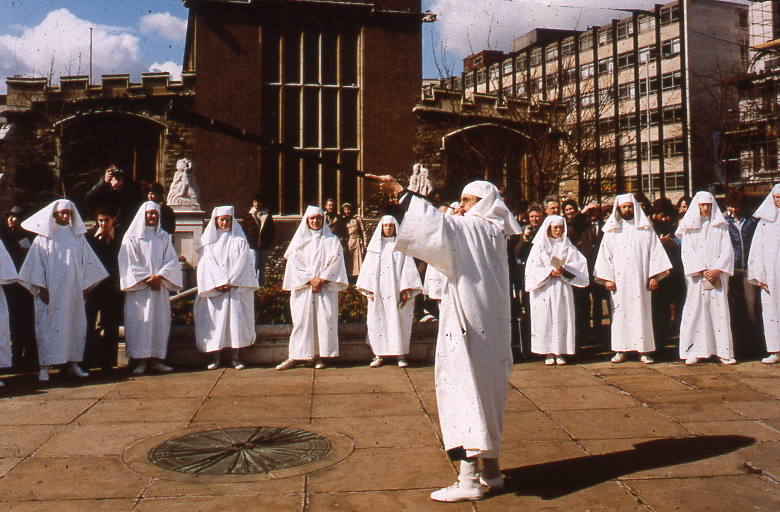
Fri 22 Dec 2023 19:30
We explore London’s History through its celebrations, festivals, calendars and almanacs of the Winter Solstice
Winter Solstice festivals have been a time of review, renewal and anticipation of the future from time immemorial. The Ancient Britons saw the Solstice as a symbol of a promise of renewal as the world entered bleak mid winter. The Roman season was presided over by Janus, a two headed God who looked both backwards and forwards, and Dickens based his second great Christmas Book on the renewal that the New Year encouraged.
We look at London’s past to see where and how the Solstice might be celebrated. We also explore the different Calendars – the Pagan year, the Christian year, the Roman year, the Jewish year, the Financial year, the Academic year and we reveal how these began. We look at folk traditions, Medieval Christmas Festivals, Boy Bishops, Distaff Sunday and Plough Monday, and other London winter traditions and folklore.
At the end we use ancient methods to divine what is in store for us in 2023.
To Book:
Jane Austen’s London Walk
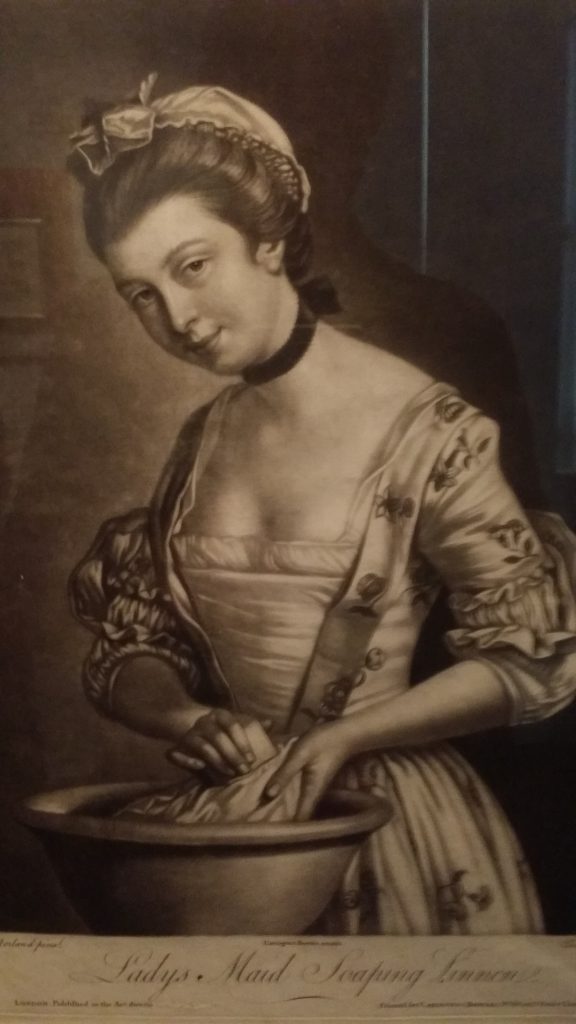
Jane Austen’s London Walk
a Special Christmas version on 23 December 2023 & normal one on 21st January
Sat 2.30 pm Green Park underground station, London (By the Fountain, just outside the Green Park exit of the Tube Station)
To Book:
An exploration of Mayfair, the centre of the London section of Sense & Sensibility and where Jane came to visit her brother
“It is a truth universally acknowledged, that a Jane Austen devotee in possession of the good fortune of a couple of free hours today must be in want of this walk.”
People associate Jane Austen and her characters with a rural setting. But London is central to both Jane Austen’s real life and her literary life. So, this tour will explore Jane’s connections with London and give the background to Sense and Sensibility, a good part of which is based in this very area. We begin with the place Jane’s coach would arrive from Hampshire, and then walk the streets haunted by Willougby; past shops visited by the Palmers, the Ferrars; visit the location of Jane Austen’s brother’s bank and see the publisher of Jane’s Books. The area around Old Bond Street was the home of the Regency elite and many buildings and a surprising number of the shops remain as they were in Jane Austen’s day.
This is a London Walk Guided Walk lead by Kevin Flude
To Book:
Christmas With Jane Austen Virtual London Tour
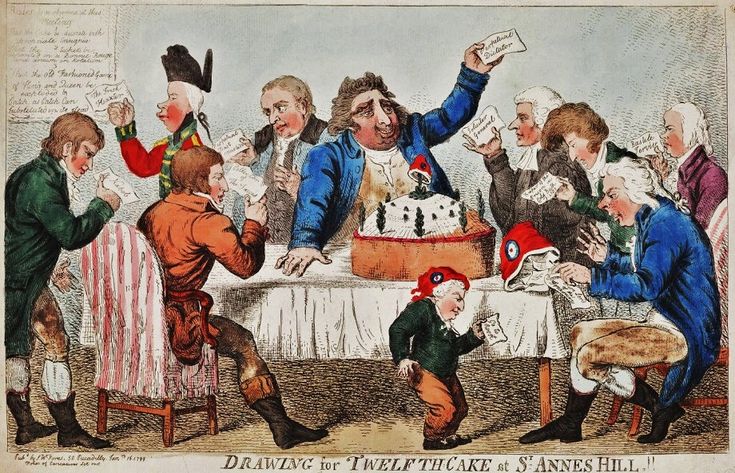
Saturday 23 December 2023 7.30pm
We look at how Jane Austen spent Christmas and at Georgian Christmas traditions and amusements.
“It is a truth universally acknowledged, that a Jane Austen devotee in possession of the good fortune of a couple of free hours must be in want of this virtual walk.”
This is a special walk, which looks at the traditions of Christmas during the Regency period and how Jane Austen might have celebrated it. It will give some background to Jane Austen’s life and her knowledge of London. We used her novels and her letters to find out what she might have done at Christmas, but also at how Christmas was kept in this period, and the range of ‘Curiosities, Amusements, Exhibitions, Public Establishments, and Remarkable Objects in and near London available to enjoy.
This is a London Walks Guided Walk by Kevin Flude, Museum Curator and Lecturer.
Review: ‘Thanks, again, Kevin. These talks are magnificent!’
To Book:
Roman London – A Literary & Archaeological Walk Saturday 16 Dec & 21st Jan 2023 11.30 am Monument Underground Station To book
Dickens London. Life, Work and Christmas Virtual Tour
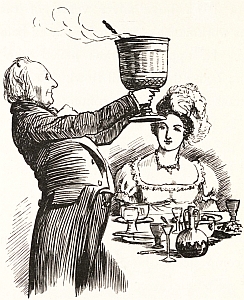
Friday 15th December 2023 7.30pm
A Virtual Tour of Dickens London with a dash of Dickensian Christmas
The Virtual Tour weaves an exploration of Victorian London with Dickens London Life and writing. On the tour we have a look at London at Christmas and the contribution Dickens made to it by his Christmas Books
Dickens writing always has a moral element as exemplified by his Christmas Books. ‘Christmas Carol’ was based on redemption and his second great Christmas Book ‘The Chimes’ on the renewal that the New Year encouraged.
We start in Southwark, visit sites associated with the Christmas Books and others and end at Staple Inn with the Christmas Book ‘The Haunted Man’.
Chaucer’s Medieval London Guided Walk
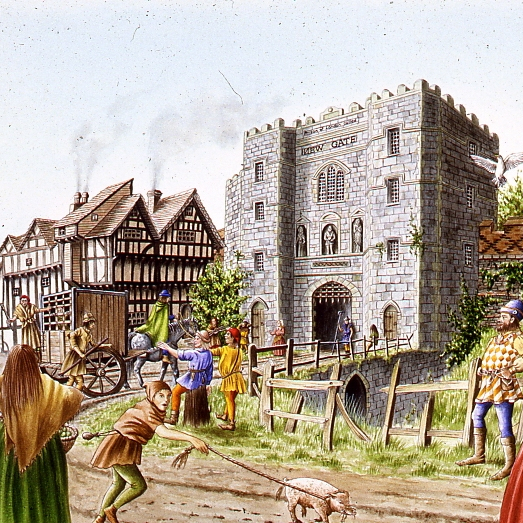
Aldgate Underground Sunday 12 November 2023 11.30pm
A Walk around Medieval London following in the footsteps of its resident medieval poet – Geoffrey Chaucer
One of the spectators at the Peasants Revolt was Geoffrey Chaucer, born in the Vintry area of London, who rose to be a diplomat, a Courtier and London’s Customs Officer. He lived with his wife in the Chamber above the Gate in the City Wall at Aldgate. His poetry shows a rugged, joyous medieval England including many scenes reflecting life in London. His stories document the ending of the feudal system, growing dissatisfaction with the corruption in the Church, and shows the robust independence with which the English led their lives.
His work helped change the fashion from poetry in French or Latin to acceptance of the English language as suitable literary language. This was helped by the growth of literacy in London as its Merchants and Guildsmen became increasingly successful. In 1422, for example, the Brewers decided to keep their records in English ‘as there are many of our craft who have the knowledge of reading and writing in the English idiom.’
Chaucer and other poets such as Langland give a vivid portrait of Medieval London which was dynamic, successful but also torn by crisis such as the Lollard challenge to Catholic hegemony, and the Peasants who revolted against oppression as the ruling classes struggled to resist the increased independence of the working people following the Black Death.
A walk which explores London in the Middle Ages, We begin at Aldgate, and follow Chaucer from his home to his place of work at the Customs House, and then to St Thomas Chapel on London Bridge, and across the River to where the Canterbury Tales start – at the Tabard Inn.
This is a London Walks event by Kevin Flude
London before and after The Roman Invasion
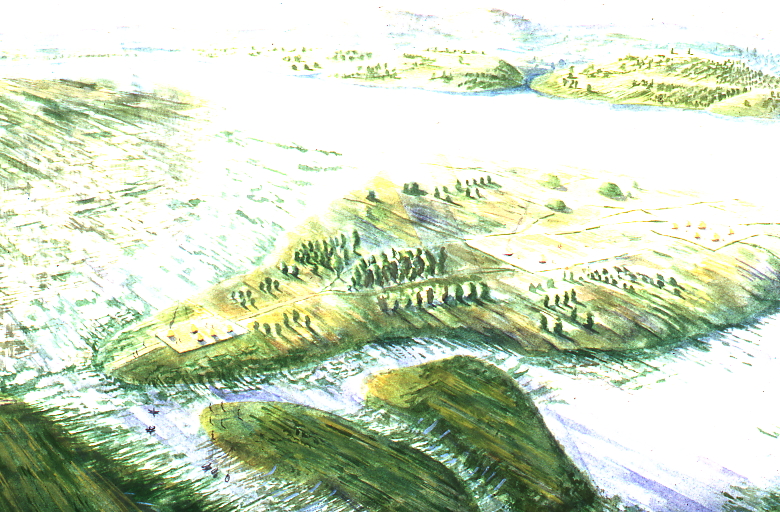
October 29th
The walk looks into the evidence for a prehistoric London and tells the story of the coming of the Romans in AD43
The walk is led by Kevin Flude, a former archaeologist at the Museum of London.
The walk investigates the City of London before and after the the Roman Conquest. What is the evidence for settlement before the Romans set up town of Londinium? Why did the Romans establish the town on this spot? Who were the early Roman Londoners and what made their choice of site so successful?
The fledgling Town was then burnt down by Queen Boudiccan and her Icenian rebels. We look at the evidence for the Revolt and London’s recovery to became the capital of Britain.
This is a London Walks Guided Walk. Look at their web site for a list of other of their amazing walks.
REVIEWS (from London Walks website)
“Kevin, I just wanted to drop you a quick email to thank you ever so much for your archaeological tours of London! I am so thrilled to have stumbled upon your tours! I look forward to them more than you can imagine! They’re the best 2 hours of my week! 🙂 Best, Sue
London Before London – Prehistoric London Virtual Walk

October 29th
An exploration of London before the foundation of Londinium
It was long thought that London was founded by a Trojan Exile in the Late Bronze Age. But historical analysis and archaeological excavation gradually demoted the idea to a myth.
On this tour we explore what was in the London area before the Romans. We begin at Heathrow and tour Greater London for evidence from the Paleolithic to the invasion of the Emperor Claudius.
We concentrate on the period since the introduction of farming, and bring together evidence for the prehistoric Kingdoms that controlled the area on the eve of the Invasion. We look for henges, barrows, hill forts, hut circles and look at genetic evidence for identity of prehistoric Londoners. The tour will end in the City.
This is a London Walks event by Kevin Flude, ex Museum of London Archaeology and Museum Curator
The Peasants Revolt Anniversary Guided Walk (virtual tour on the same day at 7.30)
Aldersgate Underground Sunday 11th June 2023 10.45am
A Virtual Walk tracking the progress of the Peasants as they take control of London
On the anniversary of the Peasants Revolt we reconstruct the events that shook the medieval world. In June 1381, following the introduction of the iniquitous Poll Tax, England’s government nearly fell, shaken to the core by a revolt led by working men. This dramatic tour follows the events of the Revolt as the Peasants move through London in June 1381.
We met up with the Peasants at Aldgate, force our way into the City. We march on the Tower of London as the King makes concessions by ending serfdom, at Mile End. But the leaders take the mighty Tower of London and behead the leaders of Richard’s government. Attacks follow on the lawyers in the Temple, the Prior at St. John’s of Jerusalem, Flemish Londoners, and on Lambeth and Savoy Palaces.
The climax of the Revolt comes at Smithfield where a small Royal party confront the 30,000 peasants.
To Book:
Tudor London – The City of Wolf Hall
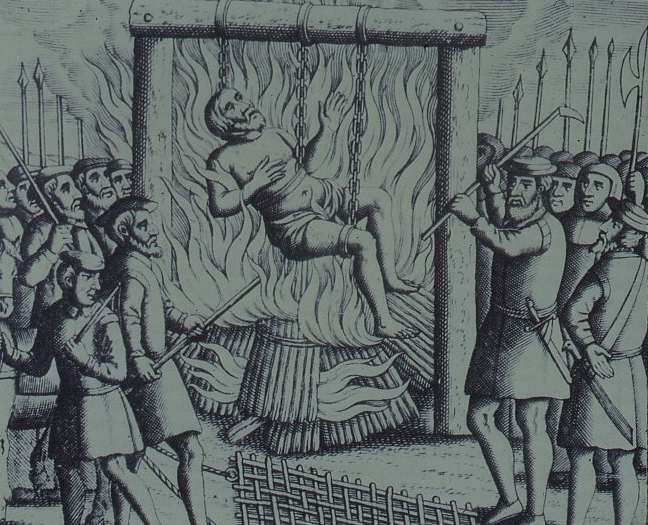
Friday 28 April And June 4th 2023 5.15pm Barbican Underground Station
The Walk creates a portrait of London in the early 16th Century, with particular emphasis on the life and times of Thomas Cromwell and Thomas More
More and Cromwell had much in common, both lawyers, commoners, who rose to be Lord Chancellor to Henry VIII, and ended their careers on the block at Tower Hill.
The walk starts with an exploration of Smithfield – site of the stake where Heretics were burnt alive and to St Bartholomew’s Monastery – given to Richard Rich after his decisive role in the downfall of Thomas More. We continue to St Paul where Martin Luther’s books where burnt, and later, were Puritans attacked dancing round the Maypole. We walk along the main markets streets of London, to Thomas More’s birthplace, and to the site of More’s and Cromwell’s townhouses before, if time allows, finishing at the site of the Scaffold where More and Cromwell met their ends.
Myths & Legends of London May Eve Special Guided Walk

Sunday 30th April 2023 3.00pm Tower Hill Tube Station
The walk tells the story of London’s legendary past, explores May Day and the Celtic Festival of Beltane
The walk is led by Kevin Flude, a former archaeologist at the Museum of London, who has an interest both in the archaeological evidence as well as the myths and legends of London’s origin.
The walk is one of a series about London’s Myths and Legends which take place on or around one of the significant festivals of the calendar. On this walk we celebrate May Day, or Beltane – the celebration of the coming of Summer.
The walk begins with the tale of London’s legendary origins in the Bronze Age by an exiled Trojan called Brutus. Stories of Bladud, Bellinus, Bran, Vortigern and Arthur will be interspersed with how they fit in with archaeological discoveries. As we explore the City we also look at evidence for ‘Celtic’ origins of London and how May Day may have been celebrated in London.
The route starts at Tower Hill, then down to the River Thames at Billingsgate, to London Bridge and Southwark Cathedral, into the valley of the River Walbrook, past the Temple of Mithras, along Cheapside towards the Roman Amphitheatre and St Pauls.
This is a London Walks guided walk. Look at their web site for a list of other of their amazing walks.
REVIEWS (from London Walks website)
“Kevin, I just wanted to drop you a quick email to thank you ever so much for your archaeological tours of London! I am so thrilled to have stumbled upon your tours! I have wanted to be an archaeologist since 1978 at the ripe old age of 8 years,… I was told for years that I could not be an archaeologist [for any number of reasons, which I now realise are completely ridiculous!], so I ended up on a different course of study. And now at the age of 50, it is my one great regret in life. So, I am thoroughly enjoying living vicariously through you, the digs you’ve been on, and the history you bring to life for us! British archaeology would have been my specific area of study had I pursued it. ?? Thank you SO MUCH for these! I look forward to them more than you can imagine, and honestly, I’ll be sad if you get them down to 1.5 hours! They’re the best 2 hours of my week! 🙂 Best, Sue
To Book:
Myths, Legends of London May Day Special Virtual Tour
Monday 1st May 2023 7.30pm
The virtual tour tells the story of London’s myths and legends and the Celtic Festival of Beltane
The virtual tour is led by Kevin Flude, a former archaeologist at the Museum of London, who has an interest both in the archaeological evidence as well as the myths and legends of London’s origin.
It is one of a series about London’s Myths and Legends which take place on or around one of the significant festivals of the Celtic calendar. On this tour we celebrate May Day, or Beltane – the celebration of the coming of Summer.
The walk begins with the tale of London’s legendary origins in the Bronze Age by an exiled Trojan called Brutus. Stories of Bladud, Bellinus, Bran, Vortigern and Arthur will be interspersed with how they fit in with archaeological discoveries. As we explore the City we also look at evidence for ‘Celtic’ origins of London and how May Day was celebrated in London.
The virtual route starts at Tower Hill, then down to the River Thames at Billingsgate, to London Bridge and Southwark Cathedral, to the Roman Forum at the top of Cornhill, into the valley of the River Walbrook, passed the Temple of Mithras, along Cheapside to the Roman Amphitheatre, and finishing up in the shadow of St Pauls
This is a London Walks Virtual Walk. Look at their web site for a list of other of their amazing walks.
To Book:
https://www.eventbrite.co.uk/e/myths-and-legends-of-london-special-may-day-virtual-tour-tickets-601341648057
Chaucer’s Medieval London Guided Walk
Aldgate Underground Sunday 16 April 2023 11.30pm
A Walk around Medieval London following in the footsteps of its resident medieval poet – Geoffrey Chaucer
One of the spectators at the Peasants Revolt was Geoffrey Chaucer, born in the Vintry area of London, who rose to be a diplomat, a Courtier and London’s Customs Officer. He lived with his wife in the Chamber above the Gate in the City Wall at Aldgate. His poetry shows a rugged, joyous medieval England including many scenes reflecting life in London. His stories document the ending of the feudal system, growing dissatisfaction with the corruption in the Church, and shows the robust independence with which the English led their lives.
His work helped change the fashion from poetry in French or Latin to acceptance of the English language as suitable literary language. This was helped by the growth of literacy in London as its Merchants and Guildsmen became increasingly successful. In 1422, for example, the Brewers decided to keep their records in English ‘as there are many of our craft who have the knowledge of reading and writing in the English idiom.’
Chaucer and other poets such as Langland give a vivid portrait of Medieval London which was dynamic, successful but also torn by crisis such as the Lollard challenge to Catholic hegemony, and the Peasants who revolted against oppression as the ruling classes struggled to resist the increased independence of the working people following the Black Death.
A walk which explores London in the Middle Ages, We begin at Aldgate, and follow Chaucer from his home to his place of work at the Customs House, and then to St Thomas Chapel on London Bridge, and across the River to where the Canterbury Tales start – at the Tabard Inn.
This is a London Walks event by Kevin Flude
Archaeology of London Guided Walk
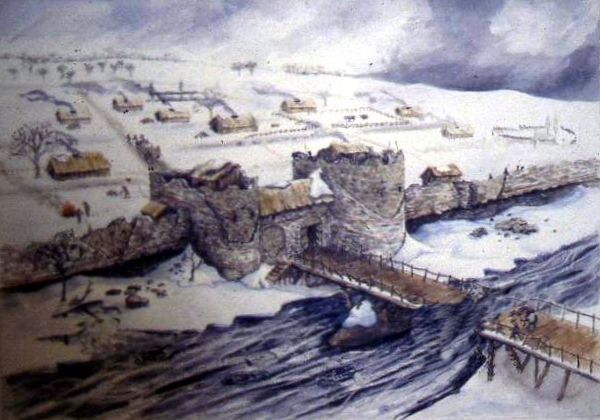
Sunday 16th April and 4th June 2023 2.30 Exit 3 Bank Underground Station
Legend says that London was founded as New Troy. Historians believed it was founded as Londinium after the Bridge was built by the legionaries of the Emperor Claudius in AD 43. Archaeologists in the 1970s and 1980s discovered that London was refounded as Lundenwic in the 7th Century and again in the 9th Century when it was called Lundeburg.
This walk tells the epic tale of the uncovering of London’s past by Archaeologists. And provides an insight into the dramatic history of the Capital of Britannia, and how it survived revolts, fires, plagues, and reacted to the decline and fall of the Roman Empire. It became the foremost English City but with periods under Viking and Norman control.
We tell the story in the streets of the City of London, beginning in the valley of the River Walbrook by the Temple of Mithras, and visit many sites where important archaeological discoveries were made, including the Roman Forum, Amphitheatre. Bath Houses, Temples, Roman roads and the City Walls.
Chaucer’s London To Canterbury Virtual Pilgrimage
Sunday 16th April 2023 7.30pm
A Virtual Walk from Chaucer’s London on pilgrimage along the route of the the Canterbury Tales to Canterbury
One of the spectators at the Peasants Revolt was Geoffrey Chaucer, born in the Vintry area of London, who rose to be a diplomat, a Courtier and London’s Customs Officer. He lived with his wife in the Chamber above the Gate in the City Wall at Aldgate, while he wrote the Canterbury Tales.
His poetry shows a rugged, joyous medieval England including many scenes reflecting life in London.
His stories document the ending of the feudal system, growing dissatisfaction with the corruption in the Church, and shows the robust independence with which the English led their lives, following the Black Death.
A walk which explores London in the Middle Ages, and takes us on the pilgrimage to Canterbury. We begin at Aldgate, and follow Chaucer from his home to his place of work at the Customs House. We cross to Southwark via the famous London Bridge where we start the Pilgrimage at St Thomas Chapel. Then to the Tabard to meet the Pilgrims and onto the Old Kent Road to Canterbury.
This is a London Walks event. Look at their web site (www.walks.com) for a list of other of their amazing walks.
Archaeology of London Guided Walk Sunday 2nd April 2023 11:15 Exit 3 Bank Underground Station
A TALE OF FOUR CITIES
Legend says that London was founded as New Troy. Historians believed it was founded as Londinium after the Bridge was built by the legionaries of the Emperor Claudius in AD 43. Archaeologists in the 1970s and 1980s discovered that London was refounded as Lundenwic in the 7th Century and again in the 9th Century when it was called Lundeburg.
This walk tells the epic tale of the uncovering of London’s past by Archaeologists. And provides an insight into the dramatic history of the Capital of Britannia, and how it survived revolts, fires, plagues, and reacted to the decline and fall of the Roman Empire. It became the foremost English City but with periods under Viking and Norman control.
We tell the story in the streets of the City of London, beginning in the valley of the River Walbrook by the Temple of Mithras, and visit many sites where important archaeological discoveries were made.
Jane Austen’s London
Sat 2.30 pm 02/04/23 Green Park underground station, London (north exit, on the corner)
An exploration of Mayfair, the centre of the London section of Sense & Sensibility and where Jane came to visit her brother
“It is a truth universally acknowledged, that a Jane Austen devotee in possession of the good fortune of a couple of free hours today must be in want of this walk.”
People associate Jane Austen and her characters with a rural setting. But London is central to both Jane Austen’s real life and her literary life. So, this tour will explore Jane’s connections with London and give the background to Sense and Sensibility, a good part of which is based in this very area. We begin with the place Jane’s coach would arrive from Hampshire, and then walk the streets haunted by Willougby; past shops visited by the Palmers, the Ferrars; visit the location of Jane Austen’s brother’s bank and see the publisher of Jane’s Books. The area around Old Bond Street was the home of the Regency elite and many buildings and a surprising number of the shops remain as they were in Jane Austen’s day.
This is a London Walk Guided Walk lead by Kevin Flude
CHAUCER’S MEDIEVAL LONDON VIRTUAL WALK
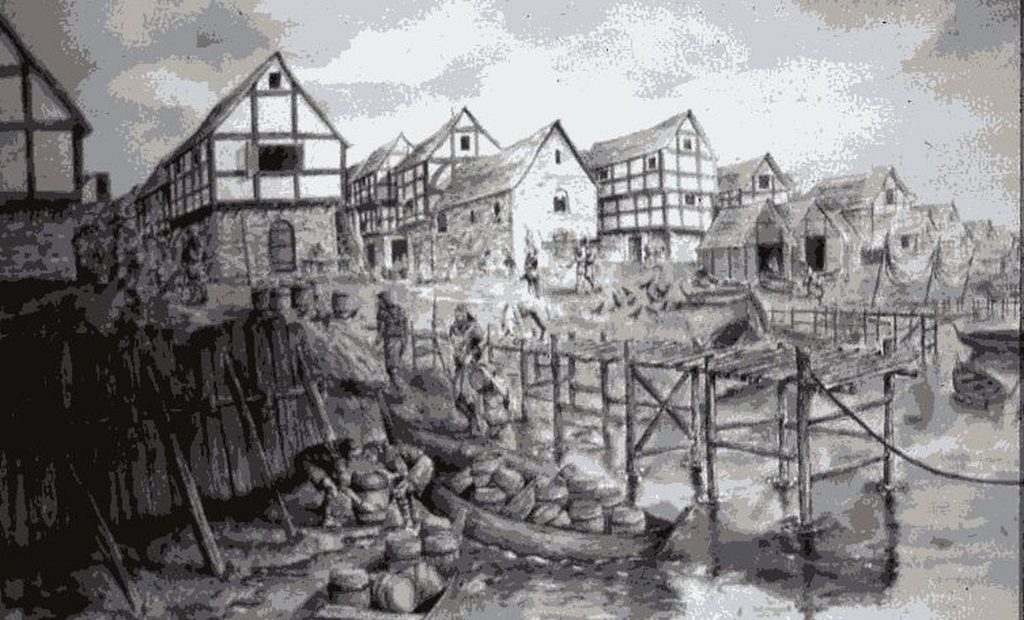
Sunday 12 February 2023 7.30pm
A Virtual Walk around Medieval London following in the footsteps of its resident medieval poet – Geoffrey Chaucer
One of the spectators at the Peasants Revolt was Geoffrey Chaucer, born in the Vintry area of London, who rose to be a diplomat, a Courtier and London’s Customs Officer. He lived with his wife in the Chamber above the Gate in the City Wall at Aldgate. His poetry shows a rugged, joyous medieval England including many scenes reflecting life in London. His stories document the ending of the feudal system, growing dissatisfaction with the corruption in the Church, and shows the robust independence with which the English led their lives.
His work helped change the fashion from poetry in French or Latin to acceptance of the English language as suitable literary language. This was helped by the growth of literacy in London as its Merchants and Guildsmen became increasingly successful. In 1422, for example, the Brewers decided to keep their records in English ‘as there are many of our craft who have the knowledge of reading and writing in the English idiom.’
Chaucer and other poets such as Langland give a vivid portrait of Medieval London which was dynamic, successful but also torn by crisis such as the Lollard challenge to Catholic hegemony, and the Peasants who revolted against oppression as the ruling classes struggled to resist the increased independence of the working people following the Black Death.
A walk which explores London in the Middle Ages, We begin at Aldgate, and follow Chaucer from his home to his place of work at the Customs House, and then to St Thomas Chapel on London Bridge, and through London to Poultry, Bucklersbury and Cheapside before visiting the Guildhall and St Pauls. We will walk in the muddy City Streets, exploring the unhealthy conditions and poverty amidst great riches and pageantry.
This is a London Walks event by Kevin Flude
THE REBIRTH OF SAXON LONDON ARCHAEOLOGY VIRTUAL WALK

Sunday 29 January 2023 7.30pm
An exploration of what happened following the Roman Period. How did a Celtic speaking Latin educated Roman City become, first deserted, then recovered to become the leading City in a germanic speaking Kingdom?
The Romans gave the name of Saxons to the barbarian pirates that plagued the North Sea region in the Late Roman Period. Historians link them with the Angles and Jutes who, according to the Venerable Bede, conquered the Roman Province of Britannia and turned it into England. London became its leading town.
But excavation and DNA analysis make the traditional story more difficult to sustain and although the Anglo-Saxons have a rich history how much of it can be trusted? Was there a Dark Age? Or was it just a ‘transition’ from Roman to English? How did English become the main language sweeping aside native Celtic and Latin languages? Much of the story of Saxon London has been founded on myth and dubious historical sources, but archaeological, documentary and genetic research are, perhaps, beginning to provide a clearer narrative.
Following the fall of Roman Britain, London was almost deserted. On this walk we explore how London recovered and grew to be the most important City in England by 1066. We begin our walk in the heart of the City at Bank, and walk through the City to St Pauls, Then along Fleet Street and the Strand to Covent Garden..
This is a London Walks event by Kevin Flude, ex Museum of London Archaeology and Museum Curator
The Decline And Fall Of Roman London Archaeology Virtual Walk
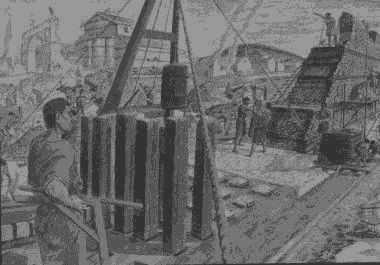
Sunday 22nd January 11.30am Exit 2 St Pauls Underground Station
An exploration of what happened at the end of the Roman Period, and how the City became deserted, and then, reborn as an English City.
The first British Brexit? The Roman Britons kicked out the Romans in 407AD, and, soon, asked them to come back after a catastrophic collapse. Faced with plaque, civil war, invasion, mass immigration, industrial decline, reversion to barter; the authorities struggled against anarchy and descent into a dark age.
But was that how it was? Wasn’t it a rather a transition into the Late Antique period in which life for most people went on much as before except paying taxes to local rulers rather than distant Romans?
The walk investigates why the Roman system in London broke down, and what really was the impact of the end of the Roman system in London? What is the evidence? and can we trust it? Or can we really do nothing much more than guess?
We tramp the streets of London in search of light to shine on the dark age of London.
The Decline And Fall Of Roman London Archaeology Virtual Walk

Sunday 22nd January 7:00pm
An exploration of what happened at the end of the Roman Period, and how the City became deserted, and then, reborn as an English City.
The first British Brexit? The Roman Britons kicked out the Romans in 407AD, and, soon, asked them to come back after a catastrophic collapse. Faced with plaque, civil war, invasion, mass immigration, industrial decline, reversion to barter; the authorities struggled against anarchy and descent into a dark age.
But was that how it was? Wasn’t it a rather a transition into the Late Antique period in which life for most people went on much as before except paying taxes to local rulers rather than distant Romans?
This virtual walk explores why the Roman system in London broke down, and what really was the impact of the end of the Roman system in London? What is the evidence? and can we trust it? Or can we really do nothing much more than guess?
We tramp the virtual streets of London in search of light to shine on the Dark Ages in London.
London Before And After The Roman Invasion

Tower Hill Underground Sunday 8th January 2023 11.30pm
The walk looks into the evidence for a prehistoric London and tells the story of the coming of the Romans in AD43
The walk is led by Kevin Flude, a former archaeologist at the Museum of London.
The walk investigates the City of London before and after the the Roman Conquest. What is the evidence for settlement before the Romans set up town of Londinium? Why did the Romans establish the town on this spot? Who were the early Roman Londoners and what made their choice of site so successful?
The fledgling Town was then burnt down by Queen Boudiccan and her Icenian rebels. We look at the evidence for the Revolt and London’s recovery to became the capital of Britain.
This is a London Walks Guided Walk. Look at their web site for a list of other of their amazing walks.
REVIEWS (from London Walks website)
“Kevin, I just wanted to drop you a quick email to thank you ever so much for your archaeological tours of London! I am so thrilled to have stumbled upon your tours! I look forward to them more than you can imagine! They’re the best 2 hours of my week! 🙂 Best, Sue
London Before London – Prehistoric London Virtual Walk
Sunday 8th January 7pm
An exploration of London before the foundation of Londinium
It was long thought that London was founded by a Trojan Exile in the Late Bronze Age. But historical analysis and archaeological excavation gradually demoted the idea to a myth.
On this tour we explore what was in the London area before the Romans. We begin at Heathrow and tour Greater London for evidence from the Paleolithic to the invasion of the Emperor Claudius.
We concentrate on the period since the introduction of farming, and bring together evidence for the prehistoric Kingdoms that controlled the area on the eve of the Invasion. We look for henges, barrows, hill forts, hut circles and look at genetic evidence for identity of prehistoric Londoners. The tour will end in the City.
This is a London Walks event by Kevin Flude, ex Museum of London Archaeology and Museum Curator
A New Year Walk on the Myths, Legends and the Origins of London

Sunday 1st January 2023 2.00pm Tower Hill Underground
The walk tells the stories of London’s myths, legends and archaeology to find out what they say about the origins of London. As its New Year we also look at New Year as it was celebrated in London through the ages.
The walk is led by Kevin Flude, a former archaeologist at the Museum of London, who has an interest both in myths, legends and London’s Archaeology.
The walk will tell the story of the legendary origins of London which record that it was founded in the Bronze Age by an exiled Trojan called Brutus. The new City was called Troia Nova or New Troy, which became corrupted to Trinovantum, and then changed to Lud’s Dun or London. When the Roman system broke down in 410 AD, historical records were almost non-existent, until the Venerable Bede recorded the building of St Pauls Cathedral in 604 AD. The two hundred year gap, has another rich selection of legends. The walk will explore these stories and compare the legends with Archaeological discoveries. We also look at New Year Customs and Folklore, and the arrangements of the Calendar for different cultures.
The route starts at Tower Hill, then down to the River at Billingsgate, London Bridge, and into the centre of Roman London.
This is a London Walks Guided Walks. Look at their web site for a list of other of their amazing walks both physical and virtual.
Ring in the New Year Virtual Walk

Sunday 1st January 2023 7.00pm
On this walk we look at how London has celebrated the New Year over the past 2000 years.
The New Year has been a time of review, renewal and anticipation
of the future from time immemorial. The Ancient Britons saw the Solstice as a symbol of a promise of renewal as the Sun was reborn. As the weather turns to bleak mid winter, a festival or reflection and renewal cheers everyone up. This idea of renewal was followed by the Romans, and presided over by a two headed God called Janus who looked both backwards and forwards. Dickens Christmas Carol was based on redemption and his second great Christmas Book ‘The Chimes’ on the renewal that the New Year encouraged.
We look at London’s past to see where and how the New Year was celebrated. We also explore the different New Years we use and their associated Calendars – the Pagan year, the Christian year, the Roman year, the Jewish year, the Financial year, the Academic year and we reveal how these began. We look at folk traditions, Medieval Christmas Festivals, Boy Bishops, Distaff Sunday and Plough Monday, and other Winter Festival and New Year London tradition and folklore.
At the end we use ancient methods to divine what is in store for us in 2023..
The walk finds interesting and historic places in the City of London to link to our stories of Past New Year’s Days. We begin with the Druids at Tower Hill, and walk around the Roman City of London, and through London History

The drinks of choice were: port. Then brandy, claret, punch, rum, porter. So says my source Henry Jeffreys in his book ‘Empire of Booze’ and in this Guardian article:
Claret, probably, originally outsold port. But the wars against France and the difficulty of importing French wine, saw a transfer to wines from our ‘oldest ally’ Portugal. But the travel distance was longer, so the wine was fortified to help preserve it better. Hence, the British addiction to port. Sherry was also popular for similar reasons, being a fortified white wine. Shakespeare calls it ‘sack’ and sometimes ‘Canary’. (Toby Belch ‘says thou lack’st a cup of canary ‘ in ‘Twelfth Night’, which is a Christmas play.)
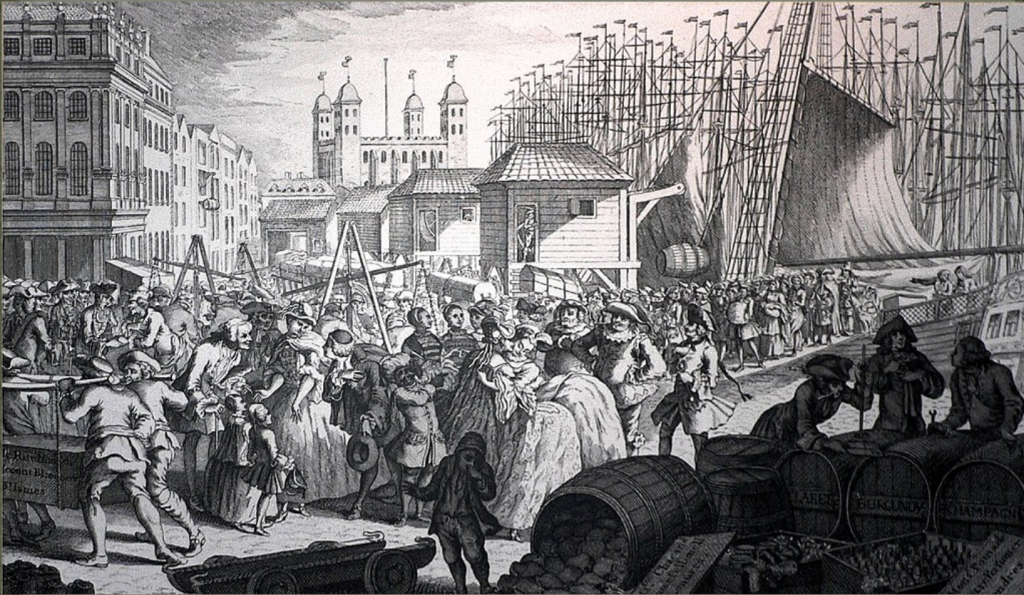
Consumption was prodigious. Samuel Johnson said, ‘All the decent people in Lichfield (where Johnson came from) got drunk every night and were not the worst thought of’. The Prime Minister. William Pitt the Younger said, ‘I have drunk three bottles of port without being the worst for it. University College has witnessed this.’ He is referring to his college at Oxford University, and so he might be considered to be another of our Prime Ministers who have disgraced themselves at Oxbridge only to rise to rule the unfortunate British. However, in those days, Port was sold in pint measures (45cl) and was 16%, while now it is 20% and sold in 75cl bottles.
Even so, three bottles is still a lot and a drunken population would have not only increased the death rate but also increased violence and abuse. Gout was one result of too much drinking and a rich diet.
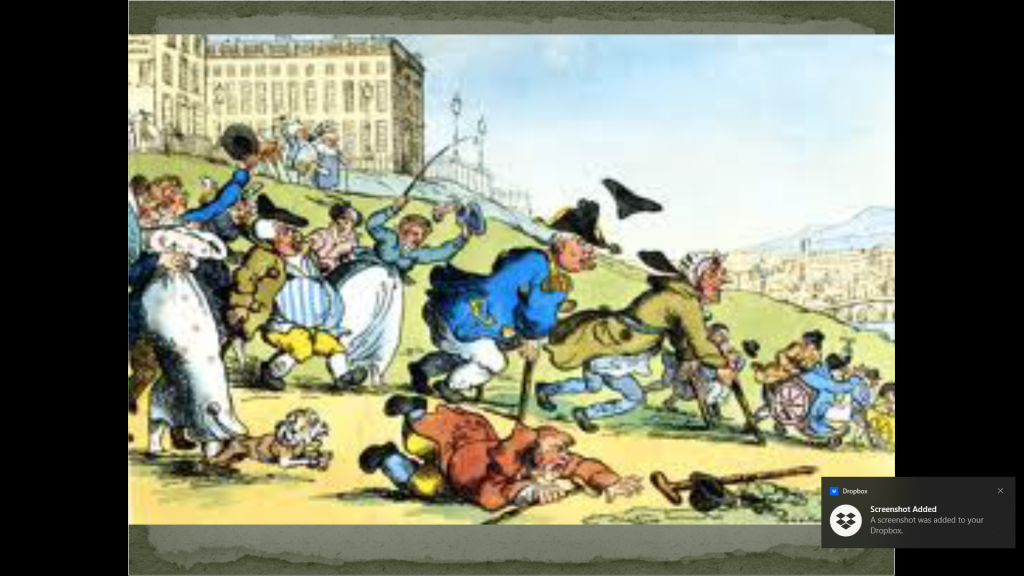
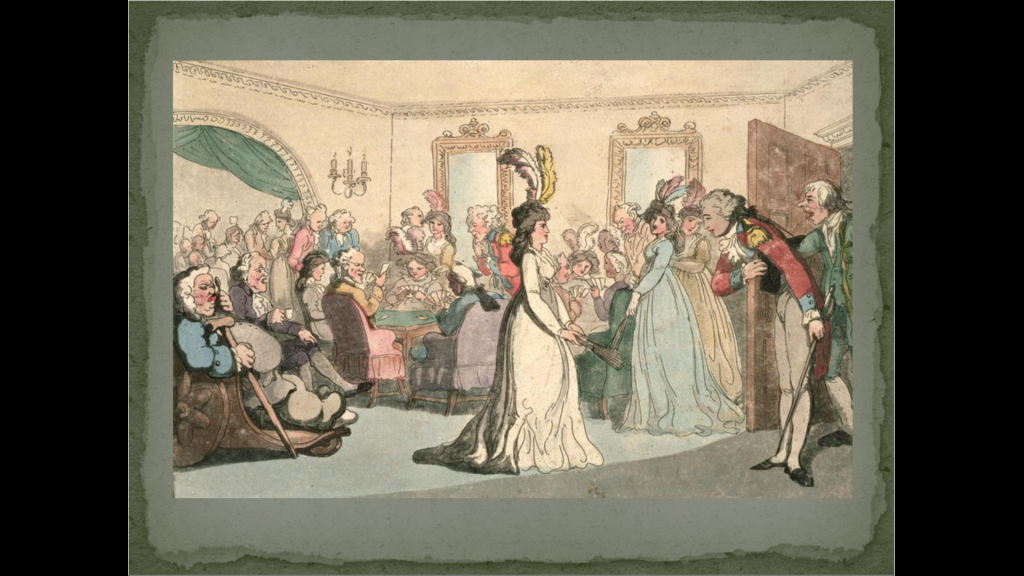
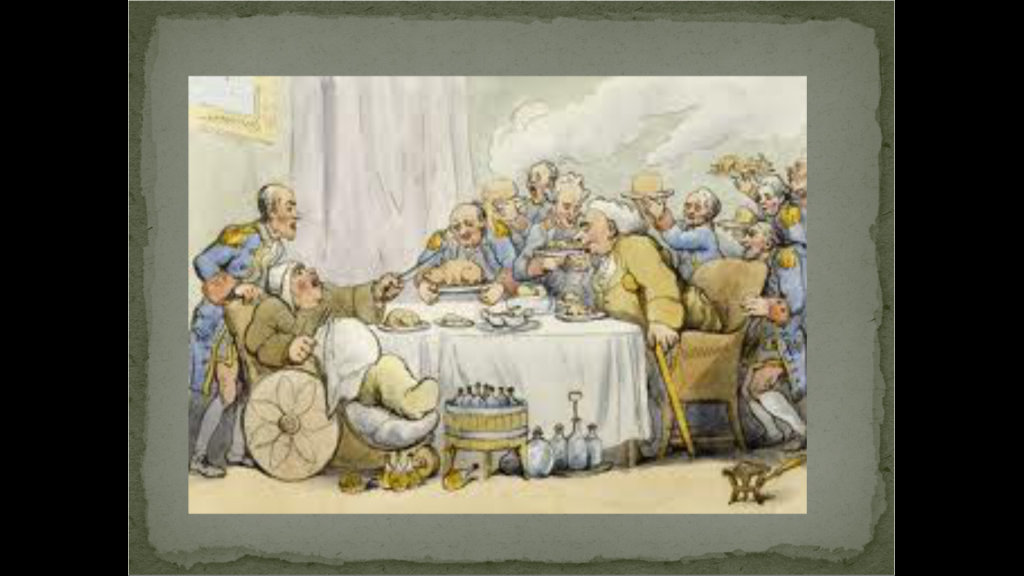
However, this is Christmas so let’s end on a high note, so here are a couple of recipes!
To make ye best punch
“Put 1½ a pound of sugar in a quart of water, stir it well yn put in a pint of Brandy, a quarter of a pint of Lime Juice, & a nutmeg grated, yn put in yr tosts or Biskets well toasted.”
Katherine Windham’s Boke of Housekeeping, 1707
And Gin? While by the 1770s the fear of the effects of cheap gin had ceased to be hot news, and after no less that eight Gin Acts of Parliament to control misuse, its cheapness was not such a threat to an ordered society. Booths and Gordon’s Gins were established in London during this period.
There seems to be a shortage of Gin punch recipes for the 18th Century, but by the end of that century this recipe survives from London’s Garrick Club
– half a pint of gin, lemon peel, lemon juice, sugar, maraschino, a pint and a quarter of water and two bottles of iced soda water.
You would not need many of these to become quite relaxed quite quickly!
First Published in 2022 and revised December 2023
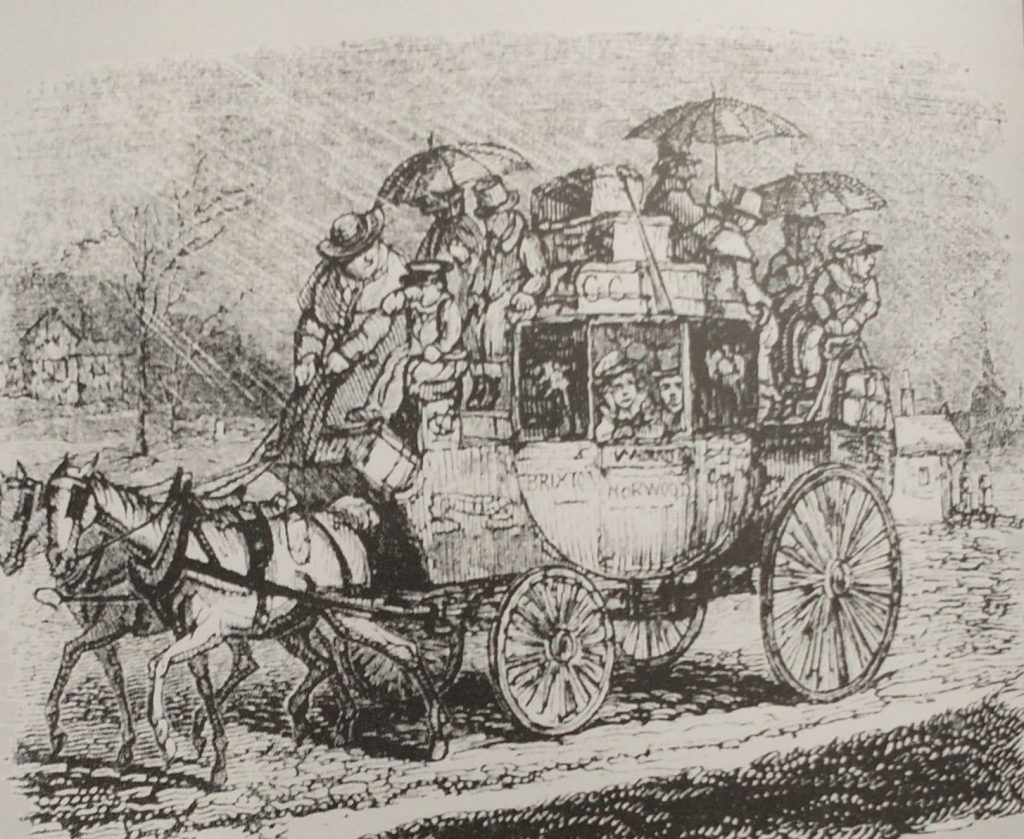
As the Sun enters the House of Capricorn remember the poor Coachman travelling all day everyday in all weathers. Washington Irving in his ‘Old Christmas’ (Originally ‘The Sketch Book of Geoffrey Crayon’ pub. 1819) describes him with a broad red face, a broad body widened by drinking beer; swathed with any numbers of layers of coats trying to keep the cold out. He has many worries on his mind as he has a coach full not only of people who need looking after but also a lot of parcels and commissions that need to be carried out in the many stops along the way. He is delivering parcels, turkeys, geese, presents, children, you name it he is responsible for its safe delivery.
Feel sorry for the people crowded inside the carriage but even sorrier for those sitting on the roof. They have umbrellas in a vain attempt to keep dry, but the umbrella will be poking you in your ear, and the run off from the canopy of the umbrella might trickle down your necks. Inside you are next to a large man who is not very salubrius looking nor too worried about pressing his thighs against you.
John Keats blamed his consumption on a stage-coach journey from London to Hampstead on a cold day in February.
Capricorn: ‘The man born under Capricorn shall be iracundious and a fornicator; a liar, and always labouring.
….The woman shall be honest and fearful, and have children of three men, she will do many pilgrimages in her youth and after have great wit.’ From Kalendar of Shepheards 1604 quoted in ‘The Perpetual Almanac of Folklore by Charles Kightly’.
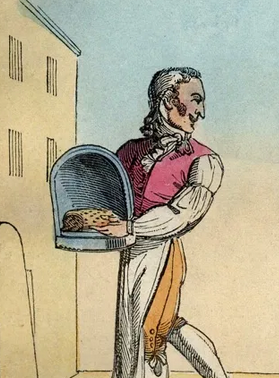
Here are some fascinating links with a seasonal theme, and at the end of the post the December posts I have reviewed, revised and reposted. And to remind you, I have a Winter Solstice Virtual Tour on Friday, and a Jane Austen Virtual Tour taking place on Saturday.. Follow the links on the www.chr.org.uk to find out more or book.
The wintery landscapes of Utagawa Hiroshige | with Alfred Haft |
This is a short video of an event held for British Museum members. It’s on YouTube, so it should be available for non-members. It shows, with some animation, beautiful snowy landscapes by the great Hiroshige. It is 12 minutes long.
Santa Claus’ Elitist Origins
I came across Ben Tumin’s conversation with Professor Stephen Nissenbaum on Santa Claus’ Elitist Origins in Tumin’s Skipped History Substack posts. Nissebnaum wrote a highly rated book called the ‘Battle for Christmas’, which pointed out that, before the 19th Century, Christmas was largely outdoors, and a riotous time of debauchery, gluttony, and drunkenness. The ruling classes managed in the 19th Century to change this for a quieter, indoor, family-based experience. Well worth a listen.
Almanac of the Past December Posts:
Here are the posts I have reviewed and republished since the last email for subscribers:

So, the old Sun is dying, and if the Sun keeps going down we are all going to die. To keep our anxiety to a minimum with all of nature seeming to be dying or hibernating, evergreens are a symbol of a promise/proof that life will continue through the dark days. So, with its bright-green leaves and its luminous berries, Holly is the ideal evergreen for the Solstice. And as the prickles symbolise Christ’s Crown of Thorns, and the berries the red blood of Jesus, the symbolism works, too, for Christians.
‘Ivy’ says Culpeper in his Herbal of 1653, says its winter-ripening berries are useful to drink before you ‘set to drink hard’ because it will ‘preserve from drunkenness’. And, moreover, the leaves (bruised and boiled) and dropped into the same wine you had a ‘surfeit’ of the night before provides the ‘speediest cure’. (The Perpetual Almanac of Charles Kightly)
Henry Mayhew (editor of Punch) in his ‘London Labour and London Poor’ (1851–62) talks of Christmasing for Laurel, Ivy, Holly, and Mistletoe. He calculated that 250,000 branches of Holly were purchased from street coster mongers every Christmas. He says that every housekeeper will expend something from 2d to 1s 6d, while the poor buy a pennyworth or halfpennyworth each. He says that every room will have the cheery decoration of holly. St Pauls Cathedral would take 50 to a 100 shillings worth.
He also calculates that 100,000 plum puddings are eaten. Mistletoe he believes is less often used than it used to be, and he hopes that ‘No Popery’ campaigners will not attack Christmassing again.

Happy Eponalia
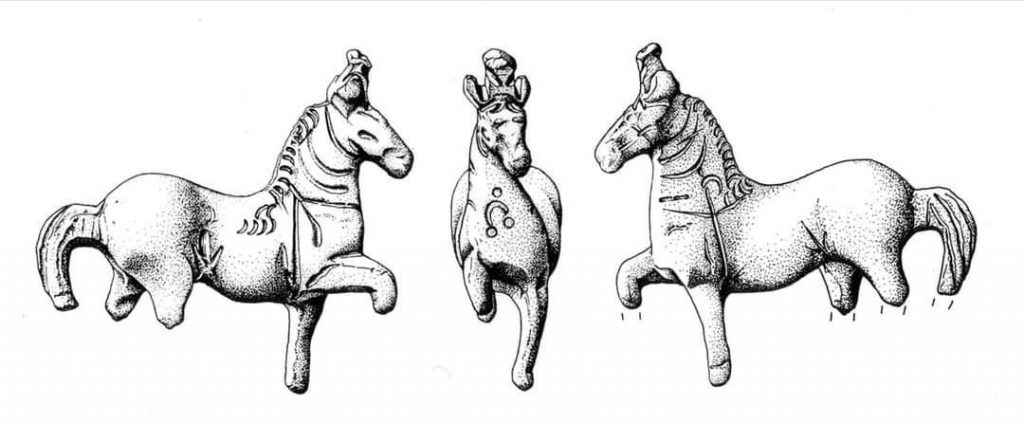
Last year (2021), I posted about Eponalia for the 18th Dec and this is what I said:
I’ve been too busy working on my Jane Austen and Christmas Virtual Tour (Sunday 19th December 7.30) to post over the last few days. And I have, therefore, shamelessly stolen this post off my Facebook friend Sue Walker, who is a talented archaeological illustrator, artist and a very good photographer.
She wrote: ‘the 18th December is the festival of the Celtic goddess Epona, the protector of horses, she was adopted by the Romans and became a favourite with the cavalry. This finely sculpted bronze horse with a head dress and symbol on its chest is 37mm high – found in Bunwell #Norfolk #Archaeology’
Culpeper on Ivy (1814 edition):
It is so well known to every child almost, to grow in woods upon the trees, and upon the stone walls of churches, houses, &c. and sometimes to grow alone of itself, though but seldom.
Time. It flowers not until July, and the berries are not ripe until Christmas, when they have felt Winter frosts.
Government and virtues. It is under the dominion of Saturn. A pugil of the flowers, which may be about a dram, (saith Dioscorides) drank twice a day in red wine, helps the lask, and bloody flux. It is an enemy to the nerves and sinews, being much taken inwardly, out very helpful to them, being outwardly applied. Pliny saith, the yellow berries are good against the jaundice; and taken before one be set to drink hard, preserves from drunkenness, and helps those that spit blood; and that the white berries being taken inwardly, or applied outwardly, kills the worms in the belly. The berries are a singular remedy to prevent the plague, as also to free them from it that have got it, by drinking the berries thereof made into a powder, for two or three days together. They being taken in wine, do certainly help to break the stone, provoke urine, and women’s courses. The fresh leaves of Ivy, boiled in vinegar, and applied warm to the sides of those that are troubled with the spleen, ache, or stitch in the sides, do give much ease. The same applied with some Rosewater, and oil of Roses, to the temples and forehead, eases the head-ache, though it be of long continuance. The fresh leaves boiled in wine, and old filthy ulcers hard to be cured washed therewith, do wonderfully help to cleanse them. It also quickly heals green wounds, and is effectual to heal all burnings and scaldings, and all kinds of exulcerations coming thereby, or by salt phlegm or humours in other parts of the body. The juice of the berries or leaves snuffed up into the nose, purges the head and brain of thin rheum that makes defluxions into the eyes and nose, and curing the ulcers and stench therein; the same dropped into the ears helps the old and running sores of them; those that are troubled with the spleen shall find much ease by continual drinking out of a cup made of Ivy, so as the drink may stand some small time therein before it be drank. Cato saith, That wine put into such a cup, will soak through it, by reason of the antipathy that is between them.
There seems to be a very great antipathy between wine and Ivy; for if one hath got a surfeit by drinking of wine, his speediest cure is to drink a draught of the same wine wherein a handful of Ivy leaves, being first bruised, have been boiled.
https://www.complete-herbal.com/culpepper/ivy.htm
First published on December 17th 2022, Revised and republished December 2023
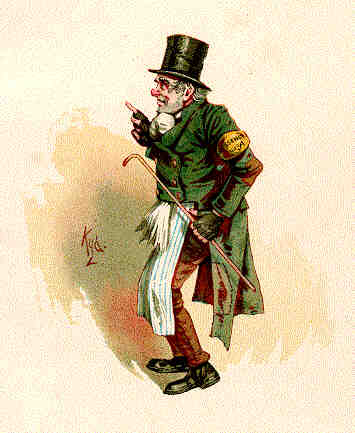
As Christmas looms, seasonal publications have a mixture of wonder and joy at the coming family reunions and festivities mingled with an awareness that, for some, Christmas will depend on the Food Bank or the Charity Shelter. The weather is now cold, living costs continue to rise at the very time extra spending is needed to unlock the joy of the Season, and to counter the dark, the cold and the spectre of death which, in fact, has always been central to the season of winter.
Charles Dickens’ Christmas Books epitomise this dichotomy and adding an element of the supernatural, provided a vehicle for joy and hope, but with a forceful political message that the authorities and the rich were not doing their Christian duty to alleviate poverty. Christmas Carol contrasts the wealth of a mean rich Stockbroker with the family of his poor employee Bob Cratchit, and provides a powerful tale of redemption.
But in this post I want to concentrate on his second Christmas Book, ‘The Chimes’. It tells the story of the stick-thin Trotty Veck who is an aged City messenger, nicknamed Trotty because of his habit of keeping himself warm by running on the spot. He is afraid to let his daughter, Meg, to marry as he has so little hope for the future. While he is worrying, he, Meg and her intended Richard are approached by Alderman Cute and Mr Filer.
Cute represents the financial industries in the City of London and the Law. Filer the new breed of political economists. These, working with the idea of Malthus and the new science of Statistics, had proved, that generous support for the poor would, inevitably, lead to a country full of poor people and no rich people. And thus, they justified the Poor Law Amendment Act of 1832 which Dickens observed as a Parliamentary reporter (1831-1834). This set up the cruel Workhouse system which provided the lowest possible level of support offering separation from family, meagre food, and sparse comforts to encourage them to stop being lazy and get back out there to earn their own living and allow taxes to fall. (brilliantly satirised by Dickens’ Oliver Twist, asking for ‘More’).

Below, I enclose the scene from the Chimes, which satirises the attitude of the governing classes.
‘And you’re making love to her, are you?’ said Cute to the young smith. ‘Yes,’ returned Richard quickly, for he was nettled by the question. ‘And we are going to be married on New Year’s Day.’ ‘What do you mean!’ cried Filer sharply?Enough ‘Married!’ ‘Why, yes, we’re thinking of it, Master,’ said Richard. ‘We’re rather in a hurry, you see, in case it should be Put Down first.’ ‘Ah!’ cried Filer, with a groan. ‘Put that down indeed, Alderman, and you’ll do something. Married! Married!! The ignorance of the first principles of political economy on the part of these people; their improvidence; their wickedness; is, by Heavens! enough to—Now look at that couple, will you!’ ... ‘A man may live to be as old as Methuselah,’ said Mr. Filer, ‘and may labour all his life for the benefit of such people as those; and may heap up facts on figures, facts on figures, facts on figures, mountains high and dry; and he can no more hope to persuade ’em that they have no right or business to be married, than he can hope to persuade ’em that they have no earthly right or business to be born. And that we know they haven’t. We reduced it to a mathematical certainty long ago!’ Alderman Cute was mightily diverted, and laid his right forefinger on the side of his nose, as much as to say to both his friends, ‘Observe me, will you! Keep your eye on the practical man!’—and called Meg to him. ... ‘Now, I’m going to give you a word or two of good advice, my girl,’ said the Alderman, in his nice easy way. ‘It’s my place to give advice, you know, because I’m a Justice. ... ‘You are going to be married, you say,’ pursued the Alderman. ‘Very unbecoming and indelicate in one of your sex! But never mind that. After you are married, you’ll quarrel with your husband and come to be a distressed wife. You may think not; but you will, because I tell you so. Now, I give you fair warning, that I have made up my mind to Put distressed wives Down. So, don’t be brought before me. You’ll have children—boys. Those boys will grow up bad, of course, and run wild in the streets, without shoes and stockings. Mind, my young friend! I’ll convict ’em summarily, every one, for I am determined to Put boys without shoes and stockings, Down. Perhaps your husband will die young (most likely) and leave you with a baby. Then you’ll be turned out of doors, and wander up and down the streets. Now, don’t wander near me, my dear, for I am resolved, to Put all wandering mothers Down. All young mothers,of all sorts and kinds, it’s my determination to Put Down. Don’t think to plead illness as an excuse with me; or babies as an excuse with me; for all sick persons and young children (I hope you know the church-service, but I’m afraid not) I am determined to Put Down. And if you attempt, desperately, and ungratefully, and impiously, and fraudulently attempt, to drown yourself, or hang yourself, I’ll have no pity for you, for I have made up my mind to Put all suicide Down! If there is one thing,’ said the Alderman, with his self-satisfied smile, ‘on which I can be said to have made up my mind more than on another, it is to Put suicide Down. So don’t try it on. That’s the phrase, isn’t it? Ha, ha! now we understand each other.’ Project Gutenberg - The Chimes by Charles Dickens
It is a savage burlesque of a satire but at its core. Filer provides the economic/statistical justification. Cute enforces it by legal harassment of the poor. Dickens was writing after a recent introduction of legislation making suicide a punishable offence.
This has a contemporary resonance. During my lifetime the first British Government to be cruel in its provision, in my opinion, for the poor was Teresa May’s Conservative Government. Her laws made getting help so difficult that people died as a result of the deliberately difficult system. ‘I, Daniel Blake’ a 2016 film by Ken Loach brilliantly captured the essence of this system. That government’s treatment of the Windrush generation was a similar example of bureaucratic cruelty. And the continuing decline of the benefit system over the 13 years of Conservative Government means that the poor have borne the brunt of austerity.
The piece above reminds us what a brilliant propagandist Dickens was. Every generation of children, since he wrote Christmas Carol, has read it or seen it in popular retellings such as The Muppet Movie. I think it could be argued that the ‘More’ scene in Oliver Twist and the Christmas Carol have made the case for compassionate care and redemption far beter than contemporary Christianity or political parties.
In the Chimes. those two men discourage Trotty from letting the young ones marry. He has a dream and sees the hopeless result of his decision: suicide, prostitution, crime. When he wakes up, he realises that what they do have is hope. Hope springs eternal and he lets them marry.
For more on this scene, have a look at the Victorian Web
Dickens was not a socialist. ‘Hard Times’ shows that Dickens was against strikes, despite leading a strike when he was a young newspaper man. He was a free trade Liberal; a reformer who believed that the rich needed to do their Christian duty and provide charitable support, pay decent wages and look after their dependents and servants. He thought society should care less about the dogma of Christianity but look to its essence, ‘love your neighbour like yourself’. This, alone, was sufficient to right the wrongs caused by the selfish.
First Published on December 16th 2022, republished and revised in December 2023.
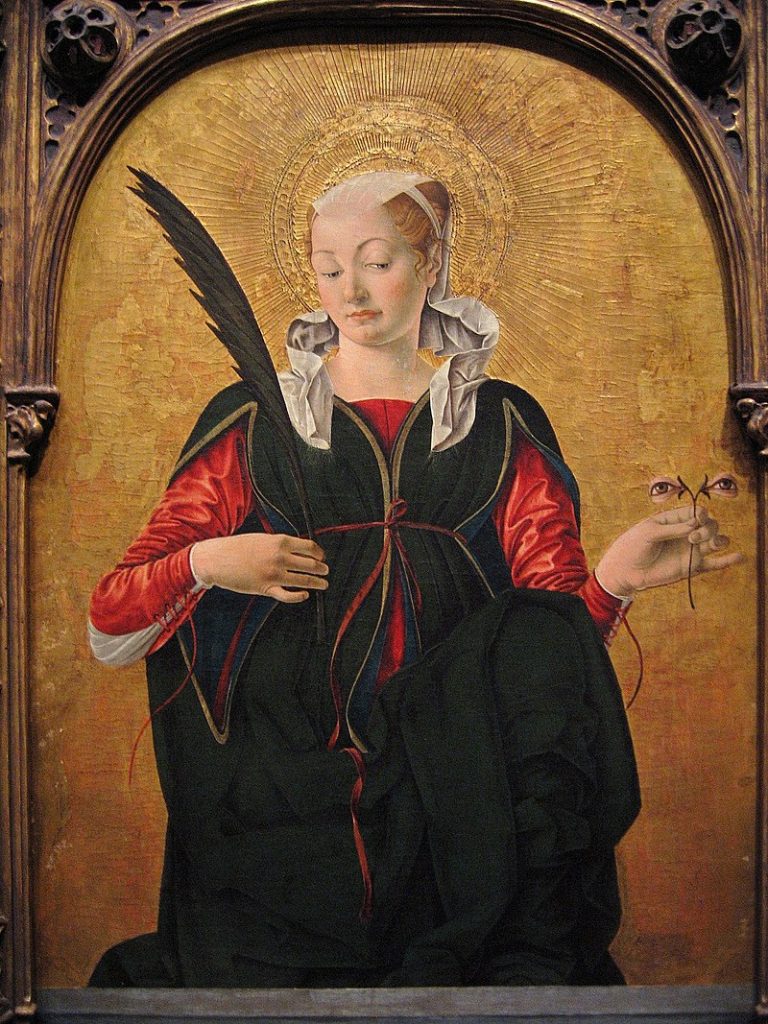
The name Lucy is from the same Latin origin (Lucidus) as lucent, lux, and lucid. It means to be bright, or to shine. It is similar to the Ancient Greek λευκός (leukós, “white, blank, light, bright, clear”. Luke has the same origins (bright one, bringer of light and light of the sacred flame) and is very appropriate for the most literate of the evangelists. At this time of the year, we are in need of a festival with bright lights to cheer us up!
And St Lucy’s Day is the beginning of the winter festival that culminates with the Solstice, where the old sun dies, and the new one is born. December the 13th was the Solstice until Pope Gregory reformed the Calendar in the 16th Century, as nine days were lopped off the year of transition.
The festival of Sankta Lucia is particularly popular in Sweden, where Dec 13th is thought to be the darkest night. Every year, the Swedish community in the UK has a service to Lucia in St Pauls. I have several times tried to get tickets, but so far, have failed miserably. But if you look lower down, you will see a link to the beautiful procession and service at St Pauls.
I found out about Sankta Lucia from a Swedish choir who hired me to do a tour of the City of London some years ago. I took them into Christopher Wren’s marvellous St Stephen’s Church and, under the magnificent Dome, they fancied the acoustics and spontaneously sang. I recorded a snatch of it.
Recent medical research has shown the importance of light, not only to our mental health but to our sleep health, and recommends that work places need to have a decent light level with ‘blue light’ as a component of the lighting. It is also an excellent idea to help your circadian rhymes by going for a morning walk, or morning sun bathing, even on cloudy days.
St Lucy is from Syracuse in Sicily, said to be a victim of the Diocletian Persecution of Christians in the early 4th Century. She is an authentic early martyr, although details of her story cannot be relied upon as true. She was said to be a virgin, who was denounced as a Christian by her rejected suitor, miraculously saved from serving in a brothel, then, destruction by fire, but did not escape having her eyes gouged out. Finally, her throat was cut with a sword. Her connection to light (and the eye gouging) makes her the protectress against eye disease, and she is often shown holding two eyes in a dish.
St. Aldhelm (English, died in 709) puts St Lucy in the list of the main venerated saints of the early English Church, confirmed by the Venerable Bede (English, died in 735). Her festival was an important one in England ‘as a holy day of the second rank in which no work but tillage or the like was allowed’.[1]
Roman Hoodie ~Part two – the Sequani
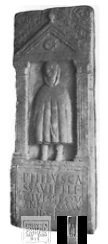
Yesterday I made a long digression which began with a discussion of Roman Winter clothing. Our picture of the hoodie from a tombstone in Cirencester, said it was of
Philus, son of Cassavus, a Sequanian, aged 45, lies buried here.
Roman Inscriptions of Britain.org
One of our readers from France alerted me to the Wikipedia page on the Sequani which explains that the name comes from the Goddess Sequana who is a water goddess. The centre of the territory is Besançon which is on the Doubs River part of the Haute Saône Doubs and near to the springs that are the source of the Seine (west of Dijon). Here, the Fontes Sequanae (“The Springs of Sequana”) gave her name to the River Seine, and a healing spring was established in the 2nd/1st BC. Enlarged by the Romans, it became a significant health centre. as Wikipedia explains in the clip below:
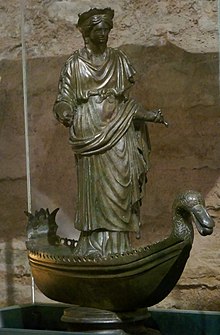
‘Many dedications were made to Sequana at her temple, including a large pot inscribed with her name and filled with bronze and silver models of parts of human bodies to be cured by her. Wooden and stone images of limbs, internal organs, heads, and complete bodies were offered to her in the hope of a cure, as well as numerous coins and items of jewellery. Respiratory illnesses and eye diseases were common. Pilgrims were frequently depicted as carrying offerings to the goddess, including money, fruit, or a favourite pet dog or bird.’
https://en.m.wikipedia.org/wiki/Sequana
First Posted on December 13th, 2022, updated on December 13th 2023

Tomorrow there is a 10% chance of snow, in London and 95% in Glenn Shee, Scotland, according to the Snow Risk Forecast. So you might like to try this medieval recipe:
To make a dish of Snowe
Take a potte of sweete thicke creme and the white of eight egges and beate them altogether with a spoone then putte them into your creame with a dish full of Rose Water and a dishfull of Sugar withall then take a sticke and make it cleane and then cutt it in the ende fowre square and therewith beate all the aforesayd thinges together and ever as it ariseth take it of and putte it into a Cullander thys done take a platter and set an aple in the middest of it and sticke a thicke bush of Rosemarye in the apple then cast your snowe upon the rosemarye and fill your platter therewith and if you have wafers cast some withall and thus serve them forth
From Medieval Manuscripts, British Library. Blog. https://blogs.bl.uk/digitisedmanuscripts/medieval-history/page/2/
BF – Before Fridges
Before fridges, snow gave the chance for ice cream and other cold desserts. The problem was keeping it for longer than the cold spell. So many Stately Homes had ice-houses. The V&A had an ice-house just outside their glorious, Henry Cole commissioned restaurant. There is an ice house preserved at the Canal Museum, in Kings Cross. It was set up by Carlo Gatti in 1857 to store ice shipped in from Norway. Another one, in Holland Park, dates from 1770 and served the infamous Fox family (PM Charles James Fox etc).
The first ice house was in Mesopotamian, but in the UK they were introduced by James 1 at his palaces in, first, Greenwich Park, and then Hampton Court. An ice house generally consists of a pit in the ground, brick lined, which tapered to a point. Above was a circular, often domed building. The ice was protected by insulation such as straw, and this structure would allow ice to be available all through the summer.

My great-grandmother hung a basket outside the window in winter to keep things cold. On my fridge-less narrow boat, I have been known to keep milk and butter outside the door, and to suspend and submerge wine in a plastic bag in the canal in high summer.
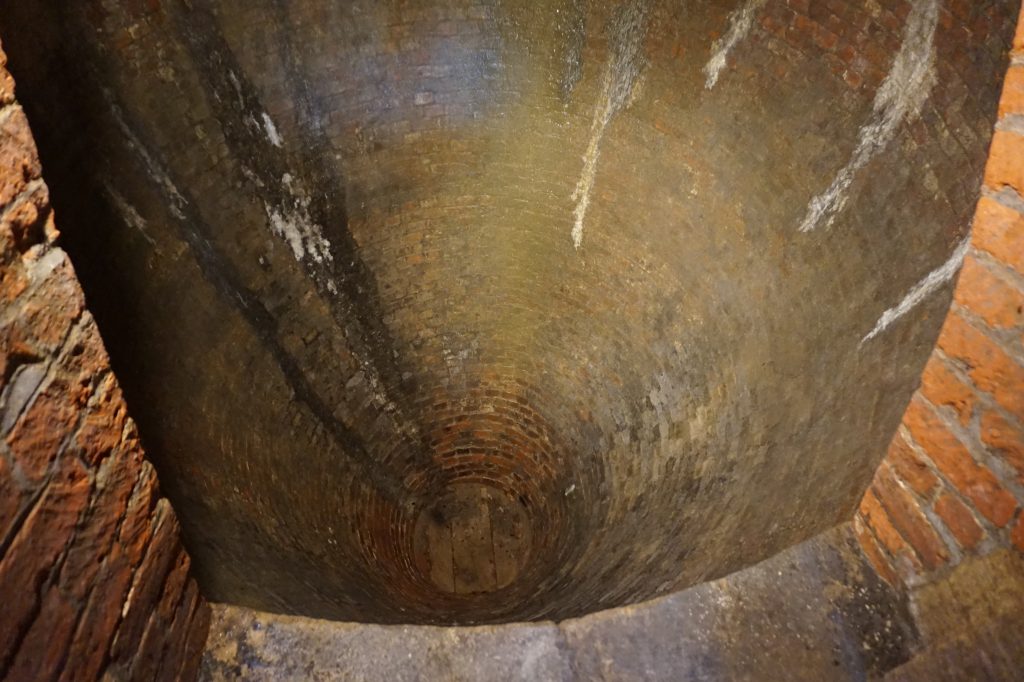
For more on Icehouses and the history of ice cream, see my post from August.
Written November 28th 2022, revised and republished 2023